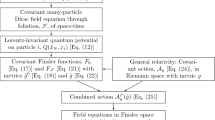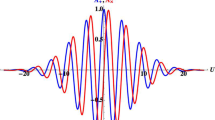Abstract
We emphasize the sharp distinctions between different one-body gravitational trajectories made by the ratio of time averagesR(t)≡−〈E kin〉/〈E pot〉.R is calculated as a function of the eccentricity (e) and of the energy (E). Whent→∞, independently ofe andE, R→1/2 for closed orbits (this clearly illustrates the fulfillment of the virial theorem in classical mechanics); whereasR≧1, at any time, for open orbits.
Similar content being viewed by others
References
Goldstein, H.,Classical Mechanics, Addison Wesley, Reading, Mass, 1950.
Author information
Authors and Affiliations
Rights and permissions
About this article
Cite this article
Brun, J.L., Pacheco, A.F. On gravitational orbits and the virial theorem. Celestial Mechanics 45, 395–400 (1988). https://doi.org/10.1007/BF01245760
Received:
Accepted:
Issue Date:
DOI: https://doi.org/10.1007/BF01245760




